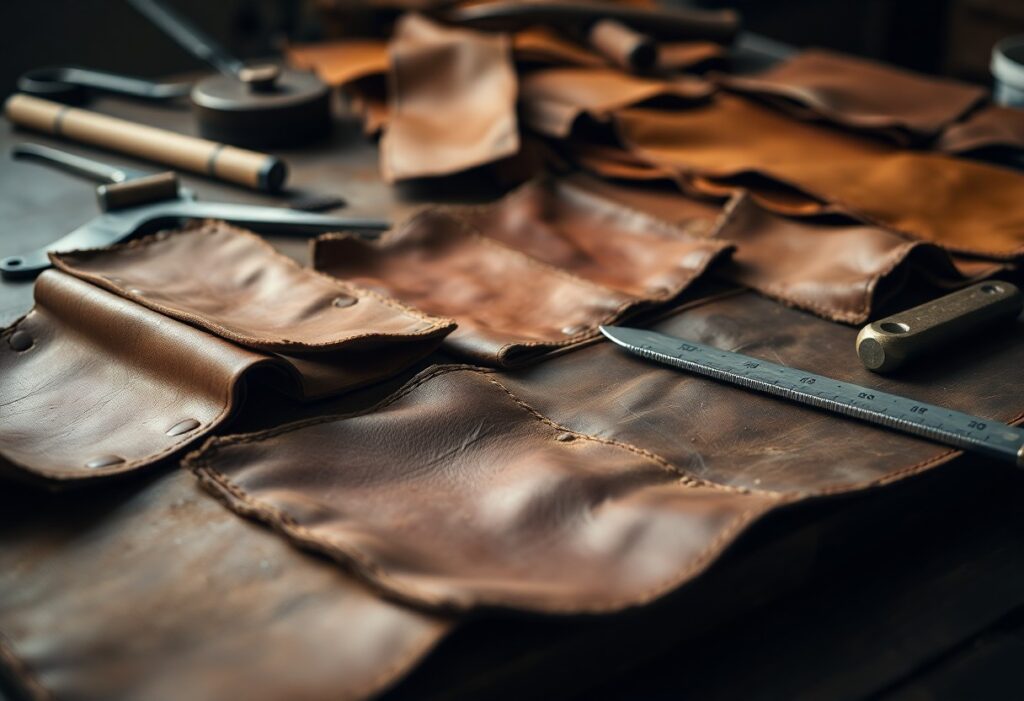
The intricate craft of leather tanning has undergone significant evolution, transforming it into a refined process that greatly affects the quality of leather products. Various tanning techniques yield distinct characteristics in leather, including its durability, water resistance, texture, and color retention abilities. The tanning process starts with raw hides and goes through essential stages, which may encompass chrome tanning, vegetable tanning, or chrome-free methods. Each of these methods imparts unique properties to the leather, influencing its functionality and maintenance. A comprehensive understanding of these processes not only helps you make informed choices about leather quality but also allows for consideration of the environmental impact, as certain methods are significantly more eco-friendly than others.
Uncover the Various Leather Tanning Techniques for Quality Results
Creating high-quality leather involves employing different tanning methods that convert raw hides into usable leather. The main techniques include chrome tanning, vegetable tanning, and chrome-free tanning. This extensive guide aims to provide insights into the unique aspects of each process, empowering you to choose the method that best meets your leather needs while considering performance and sustainability.
| Method | Characteristics |
| Chrome Tanning | Fast, water-resistant, 85% of global production |
| Vegetable Tanning | Natural, eco-friendly, 10% of production |
| Chrome-free Tanning | Environmental-friendly, 5% of production |
| Combination Tanning | Blends multiple methods for unique properties |
| Aldehyde Tanning | Specialized process for specific applications |
Discover the Benefits of the Chrome Tanning Method
The chrome tanning technique employs chromium (III) salts to produce leather that is soft, flexible, and highly desirable in various industries. This method creates leather that is not only water-resistant but also readily absorbs dyes, making it a popular choice among manufacturers. The efficiency of chrome tanning is remarkable; it can often be completed in as little as 24-48 hours, which is crucial for meeting the demands of mass production while maintaining quality.
Delve into the Rich Heritage of Vegetable Tanning
Among the oldest and most revered techniques, vegetable tanning utilizes natural tannins derived from tree bark and leaves. This traditional method is esteemed for its ability to produce leather that ages beautifully, developing a rich patina over time while remaining biodegradable. Various forms of vegetable tanning, utilizing extracts from sources like oak bark, chestnut, and mimosa, contribute to the unique characteristics of the final product. This labor-intensive process generally takes around 4-6 weeks, resulting in leather that is firmer and more structured compared to chrome-tanned leather.
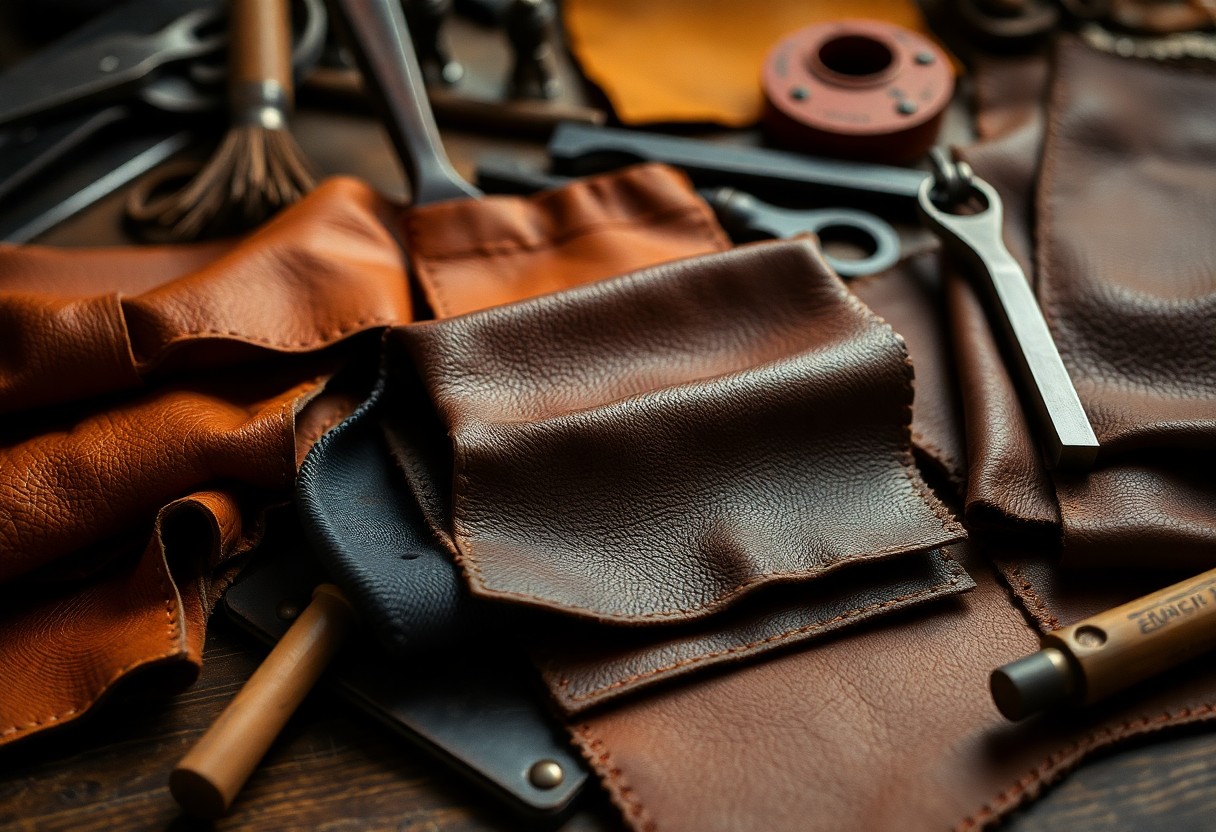
In-Depth Examination of the Leather Tanning Stages
The transformation of raw hides into premium finished leather involves a systematic and meticulous process. Here’s a detailed look at each critical step in this process and its importance in achieving optimal leather quality.
Essential Pre-tanning Procedures for Optimal Quality
To ensure the highest quality leather, raw hides must undergo a series of meticulous preparation steps. Initially, the hides are soaked in clean water for 24-48 hours to eliminate salt and dirt, followed by a liming process that effectively removes hair and fats. It is crucial to maintain precise pH control during these steps to prevent damage to the hides and set the stage for a successful tanning process.
Key Actions in the Primary Tanning Phase
The pretanning phase begins with deliming and pickling to prepare the hides for the main tanning agents. The chrome tanning method, which commonly uses chromium sulfate, can yield leather in as little as 24 hours. In contrast, vegetable tanning employs natural tannins, extending the process to roughly 20-60 days.
Temperature control plays a vital role in the tanning process, with chrome tanning typically occurring at temperatures of 35-40°C, while vegetable tanning is performed at cooler temperatures of 20-25°C. Consistently monitoring pH levels is essential to prevent damage to the leather and to ensure optimal absorption of tanning agents, which is critical for achieving the desired quality.
Advanced Leather Treatment Techniques for Enhanced Quality
There are numerous techniques available to enhance the properties of your leather. From surface finishing to deep penetration treatments, each method serves a specific purpose. With the right treatment, you can extend your leather’s lifespan by up to 50% while significantly improving its resistance to water, heat, and wear, thereby preserving its integrity for years to come.
Exploring Diverse Surface Treatment Options
Surface treatments applied to leather may encompass waxing, buffing, and protective coatings. These techniques can increase water resistance by up to 70% and allow for a choice between glossy or matte finishes to meet your aesthetic preferences. Furthermore, surface treatments are crucial in safeguarding leather against UV damage and the wear and tear of daily use, ensuring that your leather products remain in excellent condition for longer durations.
Mastering Dyeing Techniques for Enhanced Color and Longevity
The method of dyeing can significantly affect how your leather absorbs various types of dyes at different depths. Aniline dyeing, for instance, penetrates deeply into the leather, while surface dyeing offers a more controlled application of color. The dyeing technique you choose will have a direct impact on both the appearance and the long-term durability of the leather, influencing how well it ages over time.
Moreover, the dyeing method selected plays a significant role in the final characteristics of the leather. Drum dyeing can achieve up to 95% color penetration, while spray dyeing allows for enhanced precision in color application. It is noteworthy that natural dyes are more eco-friendly but may fade approximately 20% faster than their synthetic counterparts, making the choice between dye types an essential consideration for environmentally conscious consumers.
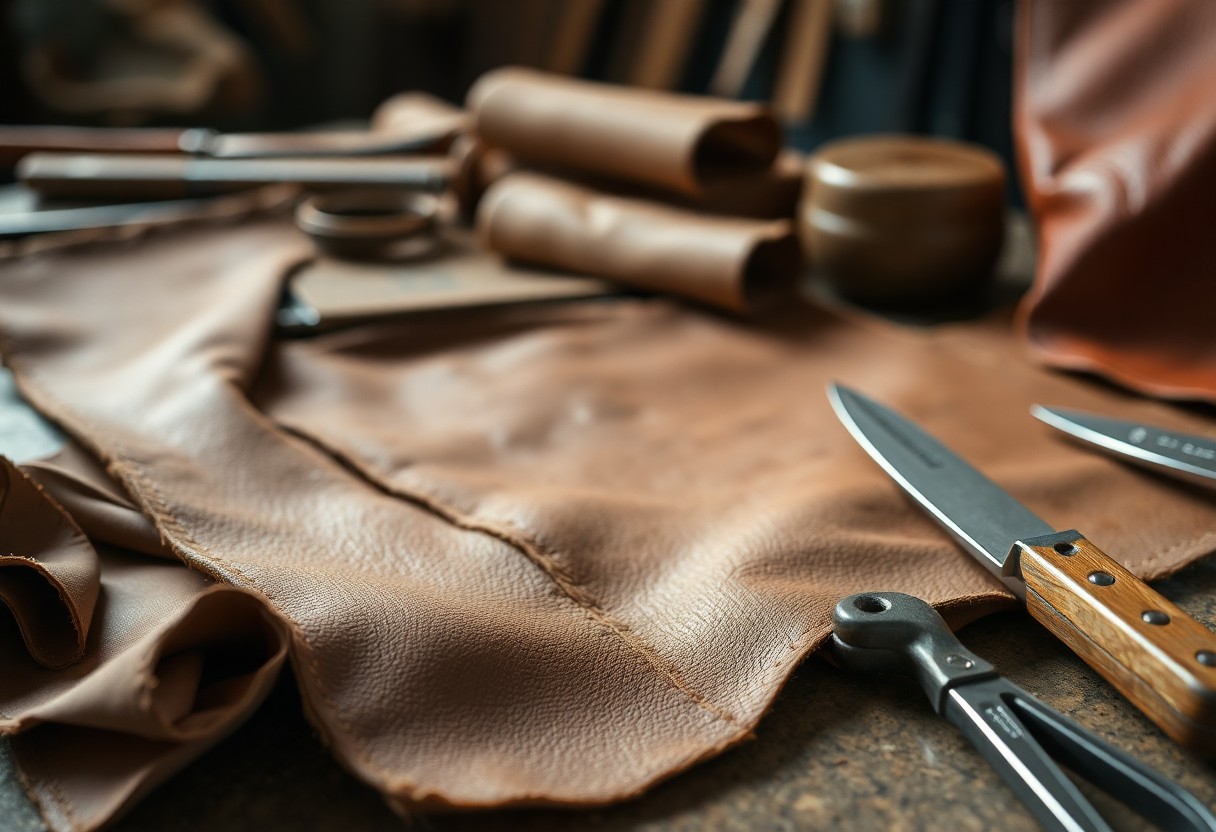
Essential Factors Affecting Leather Quality During Processing
The quality of leather is influenced by a multitude of factors throughout the processing chain. Grasping these elements is crucial for achieving superior results in both leather selection and care. The tanning method, hide quality, and processing parameters all play integral roles in determining the final properties and performance of the leather. By mastering these factors, you will be better equipped to evaluate leather quality according to your specific needs and preferences.
Selecting Raw Materials for Exceptional Leather Quality
When it comes to choosing raw materials, focusing on the condition of the hides and the animal source is paramount. The quality of your raw materials directly impacts the characteristics of the final leather product. The best hides typically come from healthy animals and feature minimal surface defects. Look for consistent thickness and an absence of parasitic damage. Selecting materials based on their intended end-use is essential, as different applications require specific hide features to ensure optimal performance and longevity.
Understanding the Importance of Processing Parameters for Quality Assurance
A direct correlation exists between processing controls and the overall quality of leather. Maintaining strict control over pH levels, temperature, and chemical concentrations is critical for achieving the best outcomes. The tanning duration typically ranges from 24 to 48 hours, with temperature controls maintained between 35-40°C. Diligent attention to these parameters ensures consistent leather quality throughout the entire processing phase.
This meticulous oversight should encompass every stage of processing. You must continuously monitor moisture content (ideally 45-55%), maintain appropriate drum speed during tanning, and ensure accurate chemical dosing. Additionally, managing the drying conditions is vital to prevent any damage to the leather. A thorough focus on these details ultimately leads to the production of higher-quality finished leather.
Expert Techniques for Achieving Optimal Leather Treatment Results
Not all leather treatment processes yield the same quality levels. It’s crucial to concentrate on temperature control, chemical balance, and timing precision throughout the tanning process to achieve the best results possible.
- Regularly monitor pH levels
- Maintain consistent temperature
- Adhere to exact chemical ratios
- Document each step meticulously
Being aware of the signs of proper tanning can empower you to create high-quality finished leather that meets your expectations and standards.
Implementing Strategies for Process Optimization in Leather Tanning
To achieve optimal results, controlling your tanning environment is vital. Keep your workspace at temperatures of 20-25°C and maintain humidity levels between 45-55% to ensure ideal conditions. Ensure that your chemical solutions are fresh and accurately measured. Regular equipment maintenance is essential for achieving consistent results throughout the tanning process.
Ensuring Quality Standards through Proper Leather Maintenance
The quality of leather is significantly influenced by your storage conditions and handling procedures. Store your leather in a dry, cool area away from direct sunlight to maintain its integrity and prevent deterioration. Regularly monitor the moisture content and rotate your stock every 30 days to sustain optimal conditions.
Monitoring the tanning process is critical for upholding quality standards. Your routine checks should include pH testing, physical inspections, and moisture content analysis. Document all findings and adjust your procedures based on the results. Consistent quality control allows you to identify potential problems before they adversely affect your final product, ensuring high standards are upheld throughout the leather processing journey.
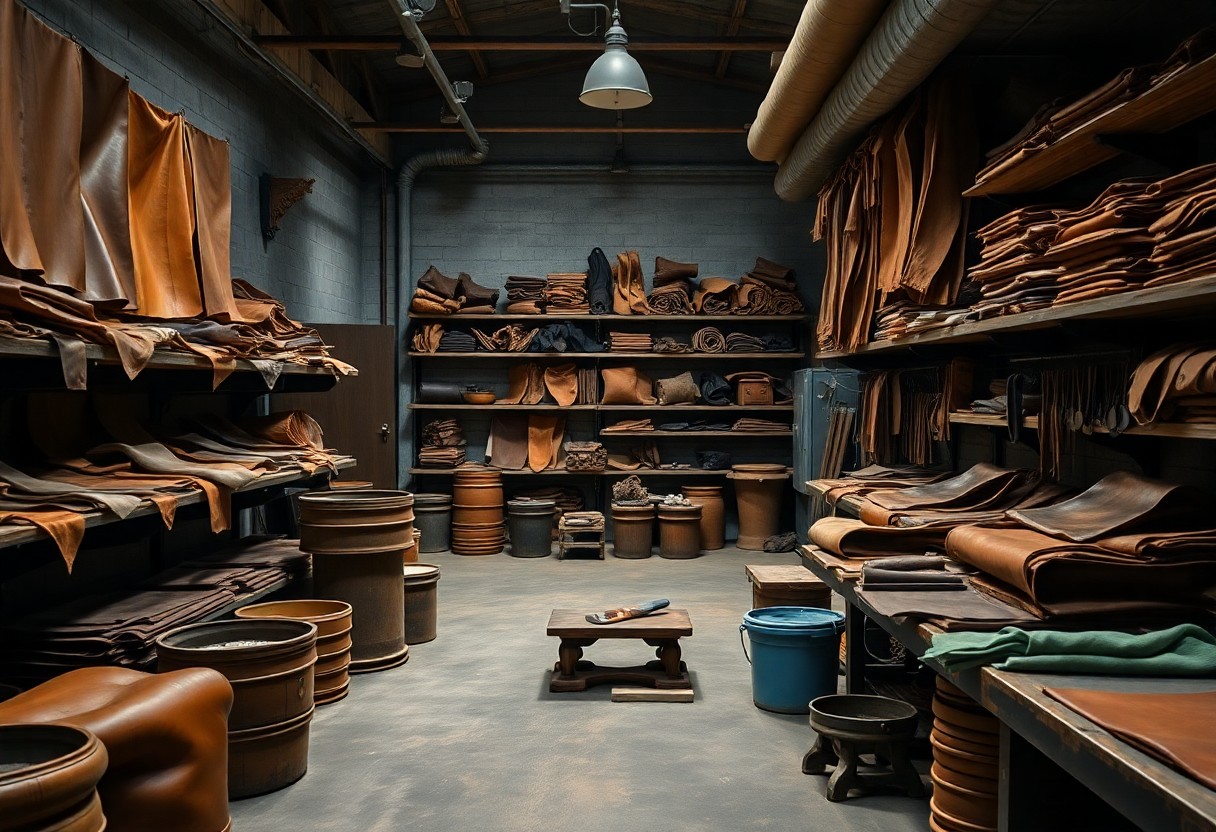
Thorough Comparison of Leather Tanning Techniques
To gain a comprehensive understanding of leather tanning, it's essential to analyze the various methods based on their respective advantages and disadvantages. Below is a detailed comparison of the primary tanning techniques:
| Pros | Cons |
|---|---|
| Chrome tanning: Fast processing, cost-effective | Chrome tanning: Environmental concerns, potential disposal issues |
| Vegetable tanning: Eco-friendly, natural process | Vegetable tanning: Time-consuming, requires higher water usage |
| Chrome-free tanning: Environmental safety, good quality | Chrome-free tanning: Complex process, higher costs |
| Combination tanning: Versatile properties | Combination tanning: Challenging quality control |
Understanding the Economic Implications of Leather Tanning Choices
The choices you make regarding leather tanning methods can significantly influence production costs. Chrome tanning demonstrates 85% cost efficiency when compared to vegetable tanning, while chrome-free methods often lead to increased expenses by 20-30%. Recognizing these economic factors is crucial for effective budgeting and planning in the leather production industry.
How Tanning Methods Influence Leather Quality
The quality of even the finest leather can be severely compromised by poor tanning decisions. The tanning method you select directly affects attributes such as durability, water resistance, and texture, which are essential for the overall performance of the leather.
For example, leather treated through chrome tanning exhibits superior water resistance and flexibility, making it perfect for various applications, while leather tanned via vegetable methods tends to show better aging characteristics and develops a unique patina over time, enhancing its aesthetic appeal and long-term value.
Essential Insights on Leather Tanning and Treatment Techniques
The information presented illustrates that various leather tanning and treatment methods significantly affect the quality and characteristics of your leather. The decision between chrome, chrome-free, or vegetable tanning will profoundly impact your leather’s durability, texture, and ecological footprint. Additionally, the dyeing technique you choose—whether aniline or crust—will influence your leather’s color depth and aging characteristics. Finally, the type of finishing applied—be it full grain, corrected grain, or top-coated—determines the standards for appearance, breathability, and maintenance requirements. A thorough understanding of these processes equips you to make well-informed decisions regarding your leather purchases and care practices, ultimately ensuring satisfaction and longevity.
Your Leather Tanning Questions Answered: FAQs
Q: What are the primary differences between chrome tanning and vegetable tanning?
A: Chrome tanning employs chromium salts, leading to soft, water-resistant leather that is processed quickly and economically. This method constitutes 85% of global leather production. In contrast, vegetable tanning uses natural tannins from tree bark and leaves, requiring a longer processing time while producing leather that gains character as it ages. While vegetable-tanned leather is more environmentally friendly concerning disposal, it is also more susceptible to staining than chrome-tanned options.
Q: How does aniline dyeing impact leather quality and appearance?
A: Aniline dyeing involves immersing leather into dye baths that penetrate deeply into the material. This technique results in a consistent color throughout the leather, providing excellent color retention. Contemporary aniline-dyed leather is usually dyed partially rather than entirely, maintaining a lighter middle layer. This approach enhances the leather's stability while ensuring a rich color depth on the surface, culminating in a more visually appealing final product.
Q: What distinguishes full grain leather from corrected grain leather?
A: Full grain leather maintains its natural surface without sanding or artificial overlays, showcasing natural pores and the strongest fiber structure, which can be restored if scuffed. In contrast, corrected grain leather undergoes sanding and is coated with a plastic layer. While corrected grain is easier to clean and maintain, it often lacks breathability and may crack over time without any means of repair, making full grain leather a more desirable option for quality-focused consumers.
The Article Guide to leather tanning and treatment methods processes types and their impact on quality appeared first on My Shoes Finder
The Article Leather Tanning: Methods, Processes, and Quality Impact Guide Was Found On https://limitsofstrategy.com
The Article Leather Tanning Methods: Processes and Quality Impact Explained First Appeared ON
: https://ad4sc.com





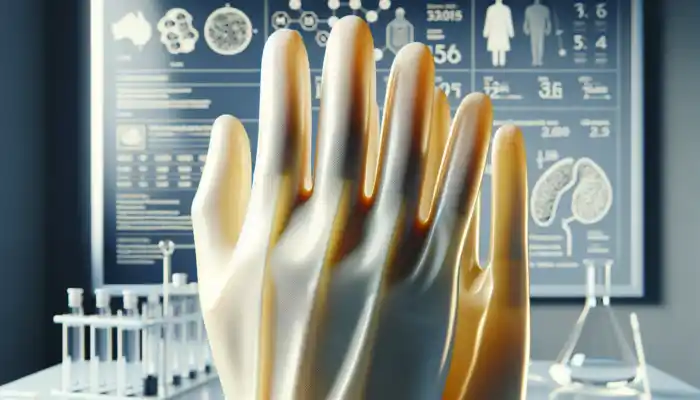









Denver Khatri
Isn’t it fascinating how leather tanning has transformed from a backwoods craft to a science? It’s like turning a humble potato into a gourmet French fry! I’ve often wondered, are our grandmothers rolling in their graves at the thought of chrome tanning? They probably just used a bucket of rainwater and some creative cursing. Plus, with the rise of eco-friendly options, it’s like leather is trying out for a sustainability award—who knew hides could be so progressive? And let’s be real, we all have that one leather jacket that deserves a medal for durability, preferably one that’s survived countless spills and late-night dance-offs. What do you all think—will the leather industry keep waltzing down the eco-friendly path, or risk stepping on some toes?